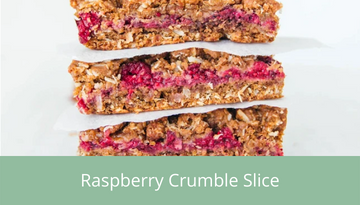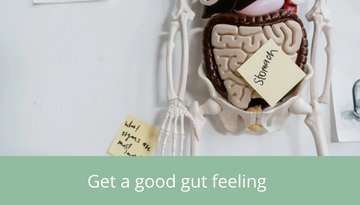
Whether you’ve just been diagnosed with Coeliac Disease or someone in your household has, you’re probably wondering where on earth to start with setting up a gluten-free pantry and coeliac safe kitchen. Finding out that many foods are off-limits can be a scary and overwhelming. Coeliac NZ member Bonnie Halverson shares with you how she went about setting up her gluten-free pantry at home.
Have you been standing in front of your fridge and pantry staring longingly at all the gluten-containing products and not having a clue where to start! Never fear, we’re fortunate now to have so many great gluten-free products available in New Zealand and there’s plenty of naturally gluten free food and drinks that you can easily enjoy. When I was first diagnosed, my gluten-eating husband and I found that meals like roasts, barbeques, soups, curries, and salads were the easiest to make coeliac-safe because we only used natural, whole ingredients. Breakfasts, lunches and baking on the other hand were more of a challenge as we learnt to find suitable substitutes and alternatives.There were a fair number of arguments in the aisles at supermarkets, crossed eyes over confusing ingredient labels and, kitchen fails with baking conversions going wrong!
Here are some pointers to help get you started with setting up your gluten free kitchen and pantry.
Find a dedicated gluten free space
Unless your entire household is going gluten free, you should make a dedicated space for gluten-free food in your pantry, fridge, and freezer.
- Place gluten-free food above all gluten-containing foods so you can ensure these remain free of crumbs and traces of gluten.
- Let others you share the kitchen with knowledge about the importance of keeping these dedicated spaces completely free from gluten.
- Make sure you clear enough freezer space. Many gluten-free products have a limited shelf-life once opened. When you buy gluten-free bread and bakery products these taste better when frozen and defrosted when you need them.
Clear sources of cross-contamination
Gluten free toast in a household toaster is not coeliac safe. You’ll need to get a fresh new toaster especially for gluten-free bread. You can also buy toaster bags which are great for keeping gluten-free bread free from crumbs when using toasters away from home.
Other sources of potential cross-contamination in your kitchen include:
- Chopping boards
- Pots and pans
- Utensils
- Colanders
- Kitchen mixers
- Tea towels
Replace anything that cannot easily be cleaned and try to keep your new breadboards and knives separate from those that are used for gluten foods.
Familiarise yourself with ingredients to watch out for
It’s well worth taking the time to learn how to read ingredient labels. You’ll find this will open up your options and make preparing meals more enjoyable. It does make supermarket shopping a little more challenging at first but with the help of the Coeliac NZ ingredient guide you’ll become a confident gluten free shopper in no time.
Many ingredient labels on packaged foods from New Zealand and Australia will state if a product contains gluten or wheat. However, there is no global standard across food labelling, so your best bet is to learn which ingredients to watch out for. Below are a few of the most common ingredients to avoid on a Coeliac diet:
- Wheat
- Rye
- Barley
- Oats
- Malt
- Wheat starch
- Triticale
Stock up on gluten free pantry staples
The great news is that there are plenty of everyday staples that don’t contain any gluten at all. This includes fresh fruit and vegetables, dairy, eggs, meat, poultry, and seafood.
Below is a list of pantry staples that will help you prepare tasty coeliac-safe meals:
- White, brown and black rice make great sides or bases for many meals (Ceres Organics and Sunrice do a great range)
- Gluten free pastas are quick and easy. Once you get used to them, you’ll hardly miss regular pasta! My favourite are the San Remo and Explore Cuisine brands.
- Grains such as quinoa, buckwheat and polenta can take time to get used to but add good variety to your diet.
- Dried herbs and spices in their natural form will add additional flavour (check ingredients on pre-mixed spices).
- Replace regular stock for gluten free stock cubes and powders such as Massel’s
- Replace soy sauces for gluten free soy sauce such as the Kikkoman Soy Sauce with the blue label.
- Avoid malt vinegar and instead use white vinegar, red wine vinegar or apple cider vinegars (supermarket brands are fine if they have clear labelling).
- One of the hardest parts of learning to live gluten free is figuring out what to do for breakfast and lunch. Hubbards and Sanitarium make great gluten free cereals and weetbix and there’s a good range of gluten free bread products such as Venerdi, Allergywise and Vogels to name a few.
- Consider making your own cereals using gluten free cornflakes, nuts and dried fruits for more cost-effective breakfast options.
- Replace regular flours with gluten free flour and self-raising flour such as those made by Edmonds or Hubbards.
- You can buy ready-made baking kits for delicious and fuss-free brownies and cakes (Bakels gluten free chocolate brownie baking mix is dangerously good, and is accredited with the Crossed Grain Logo).
- Check ingredients such as cornflour, baking powder and icing sugar are gluten free.
- Always check the labels as some canned products may contain thickeners containing gluten.
- Canned tomatoes, beans and corn are good bases for a range of salads, pastas and curries (Watties usually have pretty clear labelling to help you choose).
- Canned fruit is a great addition to your cereal or for an ice-cream sundae treat (ensure your ice cream and yoghurts do not contain gluten first).
- Replace any condiments or butter/spreads that have been used for spreading on top of gluten.
- You may wish to label new condiments and preserves to help prevent cross-contamination.
- Using spoons to get jams/chutneys/mayo etc. out of jars and containers means everyone can still enjoy sharing the same spreads.
Here’s a list of gluten free essentials for your first shop
This list assumes that you already have naturally gluten free pantry staples and focuses on the items you will need to replace with packaged coeliac-safe products.
- Gluten free flour (Edmonds or check out the Healtheries Gluten Free baking mix)
- Gluten free self-raising flour (Edmonds is my favourite)
- Gluten free bread (Vogels, Burgen, Gluten Freedom are great options)
- Gluten free cereal (Sanitarium Weetbix, Healtheries muesli and granola)
- Gluten free Soy Sauce (Kikkoman)
- Gluten free stock cubes (Massels)
- Gluten free crackers (Fantastic and Venerdi Paleo)
- Gluten free biscuits (Kea cookies are a family favourite)
- Gluten free ice cream (Tip Top have clear labelling on their tubs and bars)
Enjoy experimenting and feeling healthier
Don’t be too hard on yourself if you make mistakes! It does take time adjusting to living gluten free and learning about how to live with coeliac disease. The good news is that it truly does get easier and once adjusted you may find a new sense of enjoyment from converting your recipes into gluten free versions or experimenting with new recipes from others that have tried and tested them.
If you need support, Coeliac NZ has a wide range of resources for gluten free living along with local support networks and anonline shopping guide which lists which products are endorsed with the Crossed Grain Logo, to help you on your journey.
Adapting to your new gluten free lifestyle early on is really important so that your coeliac symptoms and quality of life can improve. You might find the ‘understanding food labels’ and ‘understanding nutrient deficiency’ on the Coeliac NZ Youtube channel helpful.







